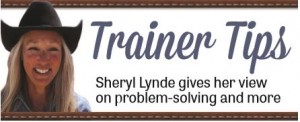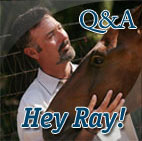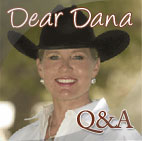Perfect practice makes perfect
 Skill is not always something innate. It is also a product of actions and intensive practice. According to the book Outliers by Malcolm Gladwell, research shows that individuals we regard as prodigies reached their level of status by amassing about 10,000 hours or more of practice. What separates a top performer or competitor from another is the amount of work they have committed to develop their ability.
Skill is not always something innate. It is also a product of actions and intensive practice. According to the book Outliers by Malcolm Gladwell, research shows that individuals we regard as prodigies reached their level of status by amassing about 10,000 hours or more of practice. What separates a top performer or competitor from another is the amount of work they have committed to develop their ability.
If you want to cultivate your talent and overcome plateaus, you need to take action and develop a technique to strengthen the way you train. The adage “practice makes perfect” isn’t accurate. “Perfect practice makes perfect” is more precise. Targeting areas for improvement while in the saddle will enhance your abilities and take you to new heights. Your ability isn’t controlled by genes; it’s controlled by your dedication to put in the time it takes to achieve your goal. Practice with a purpose to get better. Horsemen at the top of their game work substantially harder than everyone else. We are in a hurry to acquire skills, but I can assure you, there is no shortcut. This is a marathon, not a sprint.
The Art of Listening
 True horsemanship is a seamless marriage between timing and feel, and at the root of these skills is the ability to genuinely listen.
True horsemanship is a seamless marriage between timing and feel, and at the root of these skills is the ability to genuinely listen.
It can be discouraging when you attempt to have a conversation with someone who obviously is distracted or not engaged in the conversation. They may already be thinking of their reply while you are still talking, perhaps drawing from an experience in their past that presents either similar or contrasting to yours. Having a simple discussion can feel like a battle to be heard.
If you are feeling a lack of connection between you and your horse, you might help bridge the gap with an acute focus on listening to your horse’s responses to your cues. Every time I am riding and working on a specific issue, if I am not able to get the response I am looking for, the first thing I do is assess the manner in which I presented my cue.
The ‘when’ and ‘why’ of applying leg aids
 Learning to use your legs and seat in addition to your hands will develop balance, keep you safely in the saddle, and allow your horse to perform at his best.
Learning to use your legs and seat in addition to your hands will develop balance, keep you safely in the saddle, and allow your horse to perform at his best.
Riders often believe they are using their legs, but as an observer, it’s clear to see space between their leg and the horses’ sides. The correct stirrup length plays a big role in the ability of the rider to use their legs comfortably. If stirrups are too long, the rider is constantly reaching for them as they ride, straightening their legs until they feel contact. In order to make contact, they reach with their toes and by pointing their toes down; the rider develops a habit of leaning forward. If the stirrups are too short, the rider places too much weight in the stirrup which can contribute to knee pain at the very least.
The 4 common mistakes riders make
 When people come for a lesson or an evaluation, there are common mistakes shared by most riders. Let’s talk about the Top Four and the remedy for each.
When people come for a lesson or an evaluation, there are common mistakes shared by most riders. Let’s talk about the Top Four and the remedy for each.
1. Lack of Rein Management
Reins being either too loose or too tight pose risks to a rider’s safety. When the reins are too loose, the rider’s hands are out of position, as they rise to their chest or chin in order to make contact with the bit. To make up for a lag in contact and response, the rider develops fast hands and jerks to get the response they are looking for.
Having the reins too tight causes the horse to brace against the rider’s hands. Since the horse learns from release and not pressure, there are limited training opportunities. The horse becomes micromanaged, meaning there is constant contact. Therefore, the horse is given no release for the correct response, and the rider balances on the horse’s mouth instead of their seat and is easily out of control.
Fear: Resistance to our dreams
 A certain level of fear is healthy — we call it common sense. Fear compels us to focus, to direct our attention to the present moment while attempting to push our personal limits by bravely testing the water outside our comfort zone. However, too much fear will inhibit you from advancing your ability.
A certain level of fear is healthy — we call it common sense. Fear compels us to focus, to direct our attention to the present moment while attempting to push our personal limits by bravely testing the water outside our comfort zone. However, too much fear will inhibit you from advancing your ability.
By living within your comfort zone, growth will elude you. There is never an end-destination to becoming a horseman. There will always be another personal best to achieve, another goal to reach, in order to become the rider your horse deserves. It is the ride of your life.
Worries are chronic fears. There’s fear of getting hurt, fear of getting back in the saddle after being injured, and fear of judgement by others. We have to be a watcher of our thoughts — keep your eyes on what you want to accomplish, not on what created your fear.
The cold-backed horse may just need more ground work
 Years ago I was giving a clinic in mid-July, and I noticed that an owner would blanket her horse each night with a fairly thick blanket. A combination between the heat of summer and the weight of the blanket produced a pretty good sweat, so I asked the owner, “Why the blanket?”
Years ago I was giving a clinic in mid-July, and I noticed that an owner would blanket her horse each night with a fairly thick blanket. A combination between the heat of summer and the weight of the blanket produced a pretty good sweat, so I asked the owner, “Why the blanket?”
She explained that when she purchased her horse she had been informed that he was “cold-backed”. Hence, the blanket.
The term “cold-backed” is not a physical description. It’s just an analogy that indicates they need to be worked on the ground or warmed up prior to riding. In the same way, people can be regarded as being cold because of their inability to show emotion or empathy. Again, this is just a description to identify a particular characteristic.
Colt Starting, Part 2: Steady as you go
 As we discussed in last month’s column, the more you properly handle your horse prior to getting started, the easier the first ride will be for both the horse and rider. The best time to start your colt depends on the breed and also on the intended use — is the training for a specific performance? Build a strong foundation? A longtime companion for trail?
As we discussed in last month’s column, the more you properly handle your horse prior to getting started, the easier the first ride will be for both the horse and rider. The best time to start your colt depends on the breed and also on the intended use — is the training for a specific performance? Build a strong foundation? A longtime companion for trail?
Getting a good start on the young horse
 I do get young horses to train from age 15 months and older in order to prepare them for carrying a rider. Depending on the breeding and future goals, these youngsters typically get started around the ages of 2 to 3 years. Physically, you want to ensure the knees are closed prior to having them carry a rider – your vet can determine this for you. Additionally, their bones and muscles are not strong enough to carry weight for extended periods of time until they are the age of 3 or 4, so workouts need to be carefully designed for their age and physicality.
I do get young horses to train from age 15 months and older in order to prepare them for carrying a rider. Depending on the breeding and future goals, these youngsters typically get started around the ages of 2 to 3 years. Physically, you want to ensure the knees are closed prior to having them carry a rider – your vet can determine this for you. Additionally, their bones and muscles are not strong enough to carry weight for extended periods of time until they are the age of 3 or 4, so workouts need to be carefully designed for their age and physicality.
To lope…or not to lope
 The answer is yes. I have had several people come to me for help to overcome their fear of loping. Growing up, they were daring and would ride whatever horse was in front of them at whatever speed they chose and in any environment. But as they aged, that sense of reckless abandonment slowly dissipated and a new emotion emerged on the scene – FEAR.
The answer is yes. I have had several people come to me for help to overcome their fear of loping. Growing up, they were daring and would ride whatever horse was in front of them at whatever speed they chose and in any environment. But as they aged, that sense of reckless abandonment slowly dissipated and a new emotion emerged on the scene – FEAR.
Well, let’s face it — when we were younger and we hit the ground, we bounced. Now we land with a thud, and it takes a bit longer to get up. We also have more responsibilities as we age and can’t afford the time injuries take away from the workplace.
The buck stops here
"By preparing the horse and completing effective groundwork beforehand, I am building the beginning of a solid foundation that increases my odds of a safer ride."
 Can you ride the buck out of a horse?
Can you ride the buck out of a horse?
Often, I have clients who say, “my horse is bucking,” or “Sheryl, he is ready for his first ride, but I can’t get hurt — so I brought him to you.” I understand that getting hurt is not on anyone’s agenda, and to ensure your safety, be realistic with your abilities. When you feel you have brought your colt or horse as far as your knowledge has allowed, then by all means enlist the help of a professional trainer.



 Read Columns
Read Columns

